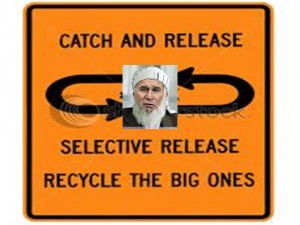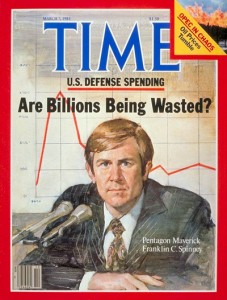NIGHTWATCH For the record. STRATFOR published an essay on intelligence that posited that the tension in the intelligence world is between collectors and others and analysts. That mischaracterizes of the source of the tension and shows very limited insight.
At the national level, among national agencies, there is an overwhelming volume of information sharing on thousands of topics, but not necessarily on the right topics. The sources are well protected. An experienced professional can scan more than 2,000 reports per hour from 16 different agencies, if he has tweaked his message profile.
The tension is not between collectors and analysts, but between Security and the information flood. How do an agency's security people protect more than 50,000 electronic messages per hour in computer profiles for – or from — disgruntled employees with clearances, every hour of every day?
State Department's effort to be a team player after 9/11 by making most SECRET-classified State cables accessible to anyone with a SECRET clearance now appears to have been excessive. It enabled the Wikileaks event this week.
In an earlier time, no PFC in the Army would ever have had such access to diplomatic traffic. Prior to 1986 the government had no personal computer work stations. Then, a PFC got to read the paper reports that senior personnel gave him to read and evaluate. He was accountable for them, usually had to sign a custodian's receipt and had a deadline for his evaluation. That system was inflexible to the point of near uselessness, but it was secure.
The US intelligence confederation of agencies still has not found a formula for balancing security and access that is any better than “need to know.” 9/11 showed that “need to know” is too restrictive for efficient counter terror cooperation. The Wikileaks event showed that the “need to share” initiative is too broad to ensure security of critical information and systems.
This is a domain still waiting for a new good idea.
NIGHTWATCH KGS Home
Phi Beta Iota: STRATFOR does not understand the intelligence discipline, but this is not a surprise since most senior managers of US secret intelligence do not understand it either. Our earnest NIGHTWATCH colleague has it half-right: the security (and legal) mind-sets are both death rattles for US intelligence. He is incorrect on the meaning of WikiLeaks–what WikiLeaks actually represents is the visible collapse of government relevancy and the end of government (as well as corporate) legitimacy as a means of organizing global to local security and sustainability. The government is–as one journalists called George Bush I–an “empty suit.” It lacks citizen-centered structure, purpose, and maturity. With respect to intelligence, there has been no lack of good ideas, only a total resistance to ideas that threaten the status quo, which is totally devoted to keeping the Military-Industrial-Congressional Complex (MICC) going, at taxpayer expense. Conflicts include those between inputs (empire building) and outputs (no accountability for relevance and timeliness); between technical collection (very high profit margins) and processing (too hard, low profit, analysts don't have money to spend and also lack substantive knowledge of what to demand); between technical disciplines (very high profit margins, no accountability) and human/open disciplines (very low profit margin, hard to do, actually requires professional skill); and between “secrets for the President” (no accountability despite a 4% accomplishment record) and decision-support for everyone else (which would actually make intelligence timely, relevant, actionable, and a profit center for the public). US Intelligence could double or triple its utility overnight with three simple steps:
1. Open Source Agency (OSA) outside the wire, civil affairs representing the military
2. Multinational Multiagency Multidiscipline, Multidomain Information-Sharing and Sense-Making (M4IS2) with OSA funding for regional intelligence centers funded by US but manned by indigenous nations and controlled by indigenous nations (all eight tribes of intelligence)
3. Whole of Government redirection of resources from dysfunctional national security state to a new hybrid model that melds the eight tribes with a slightly restructured government (three Vice Presidents for Commonwealth, Education-Intelligence-Research, and Global Engagement) that scrubs fraud, waste, and abuse while waging peace and empowering the five billion poor starting here in the USA.
The demise of the US Government began immediately after World War II, as President and General Ike Eisenhower warned it would, with the MICC taking control of the government budget while the banking world began experimenting with “exploding the customer” and getting away with it. Each decade has seen a severe upward climb of both of these pathologies, coincident with–after Viet-Nam–with a decline in the efficacy of investigative journalism and citizen activism. The good news is that the decline of the later was what Bill Moyer in Doing Democracy calls “stage five” or “the darkness.” 2012 is a convergence and emergence year. No one–least of all Phi Beta Iota–knows what it will bring, with one observation: the game will change.
If there is anyone out there able to focus Presidential attention on the fundamentals, here are the four references that matter:
2010: Human Intelligence (HUMINT) Trilogy Updated
2010 M4IS2 Briefing for South America
2009 Perhaps We Should Have Shouted: A Twenty-Year Restrospective
2000 ON INTELLIGENCE: Spies and Secrecy in an Open World







